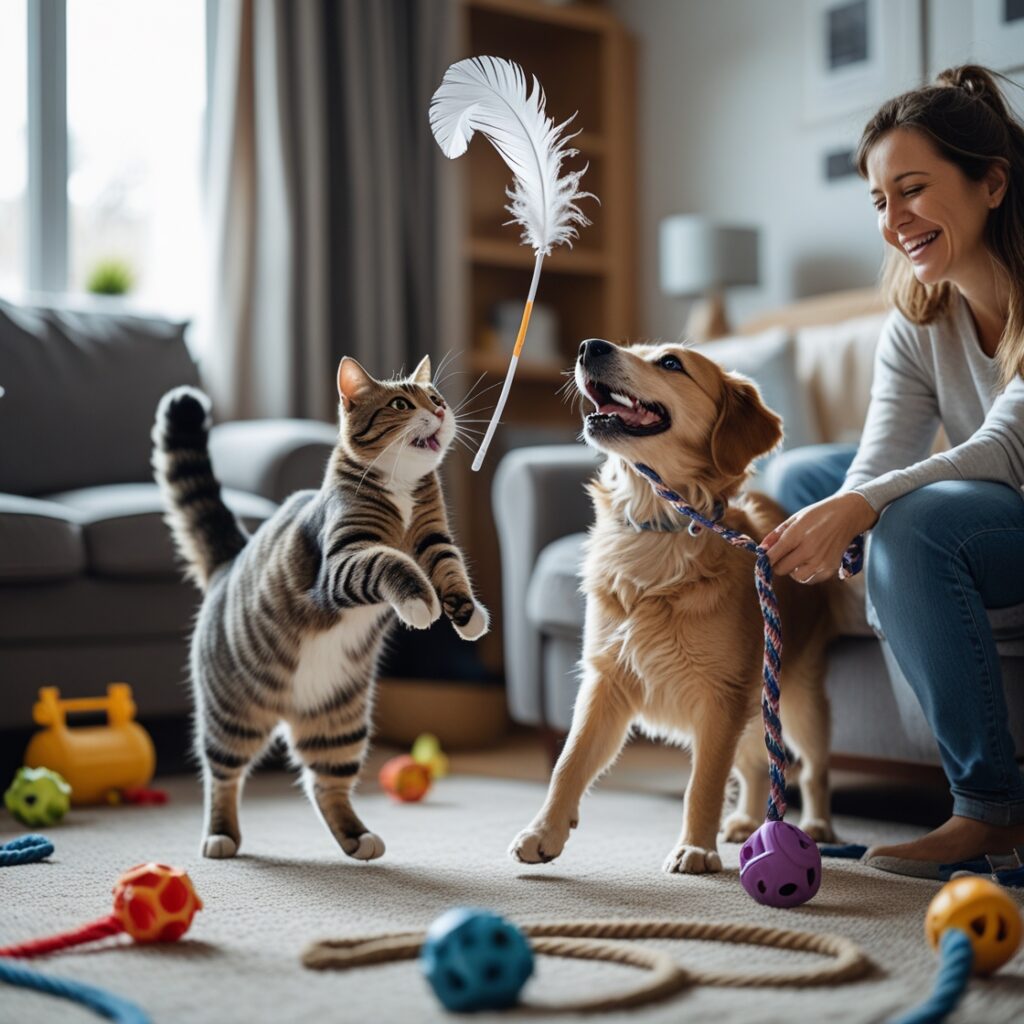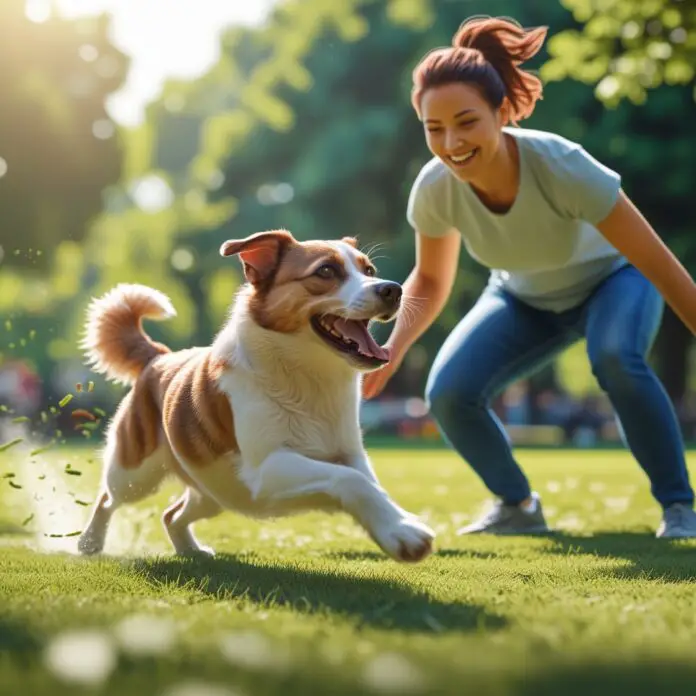Did you know that the secret to your pet’s long and healthy life might be hiding in their toy box? 🐾 It’s true! Recent studies have shown a fascinating link between playtime and pet longevity, revealing that those daily fetch sessions or laser pointer chases could be more than just fun and games.
As pet owners, we often focus on proper nutrition and regular vet check-ups to keep our furry friends healthy. But what if we told you that playtime could be just as crucial? From reducing stress to maintaining physical fitness, the benefits of play extend far beyond mere entertainment. In fact, incorporating regular play into your pet’s routine could add years to their life – and life to their years!

In this blog post, we’ll explore the surprising connection between playtime and pet longevity. We’ll dive into the types of play that promote a longer lifespan, uncover the science behind this phenomenon, and share practical tips for making playtime a vital part of your pet’s daily care routine. So, grab your pet’s favorite toy and get ready to discover how a little fun can go a long way in ensuring a happier, healthier life for your four-legged companion.
Understanding the Importance of Playtime for Pets
Physical health benefits
- Improved cardiovascular health
- Enhanced muscle tone and flexibility
- Better weight management
- Increased overall energy levels
Mental stimulation and cognitive function
Playtime offers crucial mental stimulation, keeping pets’ minds sharp and engaged. Regular play can slow cognitive decline in older pets, promoting better problem-solving skills and memory retention. Interactive toys and puzzles are particularly effective in challenging pets mentally, contributing to their overall cognitive health and longevity.
| Play Type | Mental Benefits |
|---|---|
| Puzzle toys | Problem-solving |
| Hide-and-seek | Memory enhancement |
| Training games | Learning new skills |
Types of Play that Promote Longevity
Interactive toys and puzzles
- Mental stimulation toys:
- Treat-dispensing balls
- Puzzle feeders
- Interactive game boards
Outdoor activities and exercise
Physical activities for pets:
| Activity | Benefits |
|---|---|
| Fetch | Cardio, bonding |
| Agility | Coordination, fitness |
| Swimming | Low-impact exercise |
Regular playtime with interactive toys and outdoor activities significantly contributes to pet longevity. Mental stimulation from puzzles keeps pets engaged, while physical exercise maintains their overall health. Combining these play types creates a well-rounded routine that promotes both cognitive and physical well-being.

The Science Behind Play and Pet Lifespan
Impact on cardiovascular health
- Regular play improves heart health
- Lowers blood pressure
- Enhances circulation
Hormonal balance and immune system boost
| Benefit | Description |
|---|---|
| Stress reduction | Lowers cortisol levels |
| Immune boost | Increases natural killer cells |
Playtime significantly impacts pet cardiovascular health by improving heart function and lowering blood pressure. This physical activity enhances circulation, promoting overall well-being. Additionally, play sessions contribute to hormonal balance and immune system strength. By reducing stress and cortisol levels, pets experience better immune function, increasing their natural ability to fight off diseases.
Incorporating Playtime into Daily Pet Care Routines
Scheduling regular play sessions
- Morning: 10-15 minutes before work
- Afternoon: 15-20 minutes after work
- Evening: 30 minutes before bedtime
Rotating toys to maintain interest
| Toy Type | Rotation Frequency |
|---|---|
| Chew toys | Weekly |
| Interactive puzzles | Bi-weekly |
| Plush toys | Monthly |
Incorporating playtime into your pet’s daily routine is crucial for their well-being. Start by scheduling regular play sessions throughout the day, ensuring your pet receives consistent attention and exercise. Rotate toys frequently to keep your furry friend engaged and prevent boredom. This strategy not only maintains their interest but also provides varied mental and physical stimulation, contributing to their overall health and longevity.
Potential Risks and How to Avoid Them
Overexertion and injury prevention
While playtime is crucial for pet longevity, it’s essential to prevent overexertion and injuries. Monitor your pet’s energy levels and stop play if they show signs of fatigue. Gradually increase exercise intensity and duration to build endurance safely.
Choosing safe and appropriate toys
| Toy Type | Safety Considerations |
|---|---|
| Chew toys | Durability, size |
| Puzzle toys | Non-toxic materials |
| Fetch toys | Soft, rounded edges |
Select toys that match your pet’s size, age, and play style. Regularly inspect toys for wear and tear, replacing them when necessary to prevent choking hazards.
Conclusion
Playtime is more than just fun for our furry friends—it’s a vital component of their overall health and longevity. By engaging in various types of play, from interactive toys to outdoor activities, pet owners can significantly contribute to their companions’ physical and mental well-being. The science is clear: regular play reduces stress, maintains a healthy weight, and stimulates cognitive function, all of which are crucial factors in extending a pet’s lifespan.

As responsible pet owners, it’s essential to incorporate playtime into our daily routines. Whether it’s a quick game of fetch or a puzzle toy session, consistent play keeps our pets active and engaged. However, it’s equally important to be aware of potential risks and take necessary precautions to ensure safe play. By prioritizing playtime and following best practices, we can help our beloved pets live longer, healthier, and happier lives.




I’ve been surfing online greater than 3 hours as of late, but I never discovered any attention-grabbing article like yours. It is lovely value sufficient for me. In my view, if all webmasters and bloggers made good content as you probably did, the internet will be much more useful than ever before.